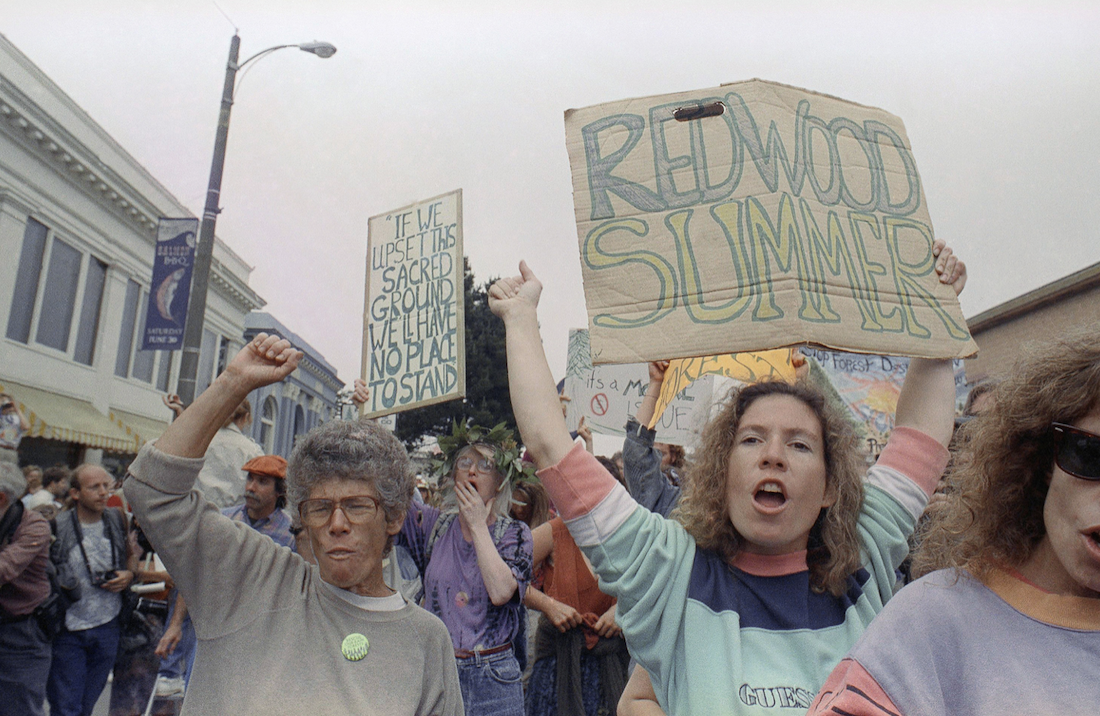
Thirty decades ago, countless numbers of environmentalists answered a contact to converge on California’s North Coast — a landscape characterized by towering trees nurtured by the coastline’s fog and rain — for a summer time of resistance. They blocked streets, sat in trees and chained them selves to logging gear to halt old-advancement cutting in what came to be identified as “Redwood Summer months.”
At initial, the activists appeared to have unsuccessful: Their coalition unraveled, and the timber businesses ongoing their logging designs. Still in the very long run, Redwood Summer marked a turning level in environmental activism — one particular that in the long run served alter forest management. The episode was section of a multi-pronged challenge to industrial logging that also provided extra mundane strategies, this kind of as lawsuits and legislation. In the close, it was this combination that brought long lasting transform.
Redwood Summer time was portion of a advanced set of political and authorized approaches that steadily assisted change forestry throughout the West.
Considerably of Redwood Summer season qualified a personal company, Pacific Lumber, and its broad holdings, which include the Headwaters Forest, some 60,000 acres of redwoods around Fortuna, California. Right up until the 1980s, Pacific Lumber experienced a name for harvesting its forests conservatively, as well as for getting care of its workforce, supplying them positive aspects and bonuses. That modified in 1985, when financier Charles Hurwitz made use of significant-hazard funding to purchase the business, intending to liquidate the historical redwoods to pay off money owed. The task grew to become an immediate focus on for environmental activists.
The radical team Earth Very first! issued the invitation to Redwood Summer months. Its blockades, tree-sits and rallies grew in frequency and depth about the summertime of 1990, as did the accompanying shoving matches, screaming confrontations and fistfights involving activists and timber employees. The incidents drew community consideration to both equally the conflict and the damaging logging practices. Continue to, Pacific Lumber pressed ahead, logging until eventually lawful injunctions stopped them.
Meanwhile, Earth Initially! confronted interior turmoil. A single of the group’s main organizers, Judy Bari, experienced a heritage of labor arranging and attempted to make solidarity with the loggers, believing they have been exploited by the corporation. To assist loggers, Bari disavowed tree-spiking, a controversial tactic in which activists drove metal spikes into trees, thereby forcing timber corporations to possibly halt reducing or hazard damaging saws and injuring personnel. Bari’s actions alienated quite a few activists, who imagined an alliance with loggers betrayed Earth First! ideas.
A person of people concepts was a deep philosophical argument for biocentrism — the notion that human beings and the non-human entire world keep equivalent ethical price, as historian Keith Makoto Woodhouse clarifies in The Ecocentrists. At the close of Redwood Summer, Dave Foreman, just one of Earth To start with!’s founders, left the business mainly because he felt that social justice really should not be component of its mission, crafting in the Earth Very first! Journal, “We are biocentrists, not humanists.” Bari pushed back: “Earth Initially! is not just a conservation motion, it is also a social transform motion.” These types of fissures about the correct aim of activism echo in today’s debates around the Environmentally friendly New Offer, whose critics regard challenges these kinds of as “repairing historic oppression,” schooling and overall health care accessibility as out of spot in local weather legislation.
As radical Earth First!ers quarreled, local environmentalists also tried to halt the company’s ramped-up logging. They released a statewide campaign for a ballot initiative, nicknamed Forests For good, meant to sustain equally forests and the logging business. The legislation would have shielded some mill employment by banning raw log exports, supplied funds to retrain loggers for diverse jobs and restructured the condition Board of Forestry, which the timber sector experienced dominated for a long time. But it failed to move in November 1990, getting only 48% of the vote.
In the subsequent 10 years, even so, activists and policymakers transformed the North Coast anyway. The activists driving the ballot measure examined Pacific Lumber’s harvest options and submitted lawsuits when the firm violated state conservation laws. Routinely, Pacific Lumber filed timber harvest strategies with inadequate environmental assessments — failing, for illustration, to survey potentially endangered species. When the point out Board of Forestry permitted the programs anyway, courts stepped in and halted the logging. Sooner or later, the enterprise grew weary of the relentless protests and lawsuits and, in 1996, it sold the most contested section of the Headwaters Forest to California and the federal federal government. In the meantime, court docket rulings strengthened state legislation, these kinds of as the California Environmental Excellent Act and the Forest Apply Act, that required stronger environmental and species protections and further weakened the company solid of the state’s Board of Forestry.
However, examining Redwood Summer’s impression after three many years is intricate. In Defending Giants: The Redwood Wars and the Transformation of American Environmental Politics, historian Darren Frederick Speece concluded that Redwood Summer time further more polarized the timber business and environmentalists, a legacy that lingers nowadays. The failure to come across widespread trigger with workers aided fracture Earth Initially! and now routinely characterizes environmental politics throughout industries. But Redwood Summer season was also element of a elaborate set of political and lawful procedures that slowly served completely transform forestry in California and across the West, specifically on personal land. Ideology moved radicals, although it took lawsuits and persistent citizen motion to go organizations and legislatures.
This tale was originally published at Superior Region Information and is republished in this article with permission.
Major picture: Redwood Summer time protestors peacefully crowded the streets of Fort Bragg on Saturday, July 21, 1990 in Fort Bragg to protest the above cutting of forest. Photo: AP Picture/Sarah Fawcett
For far more, decide on up a copy of Defending Giants: The Redwood Wars and the Transformation of American Environmental Politics.
